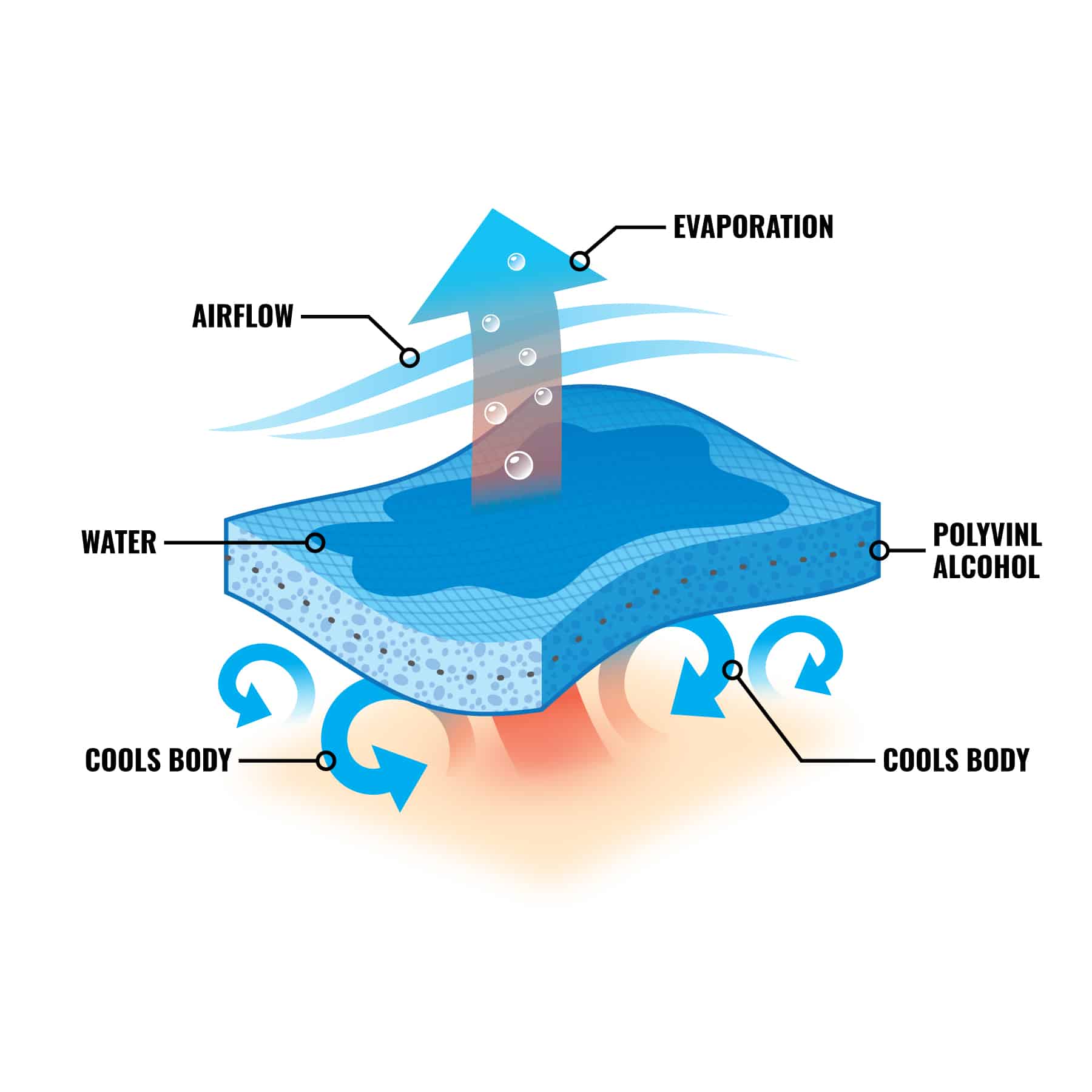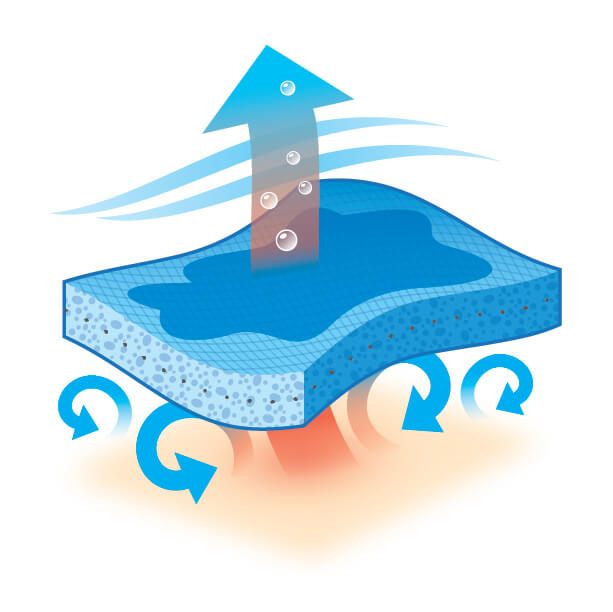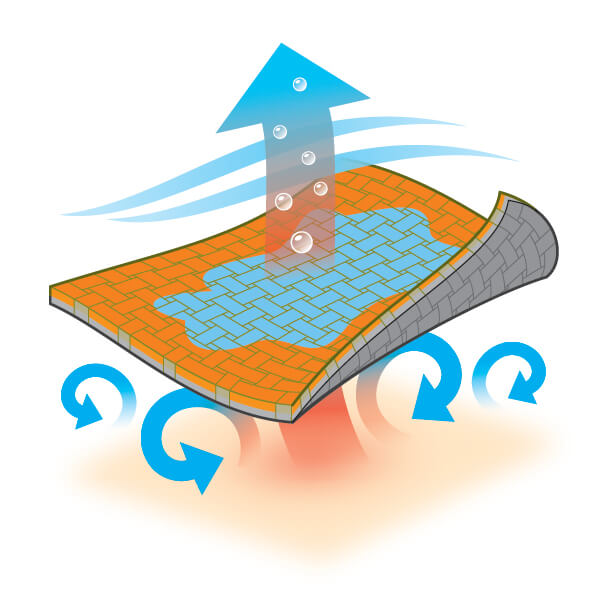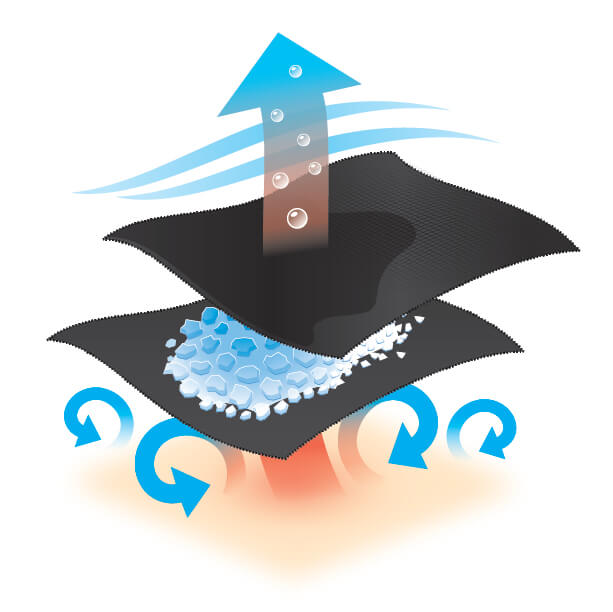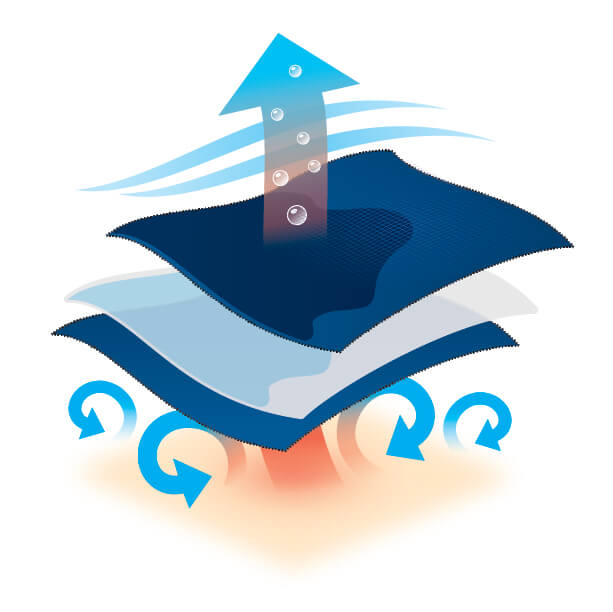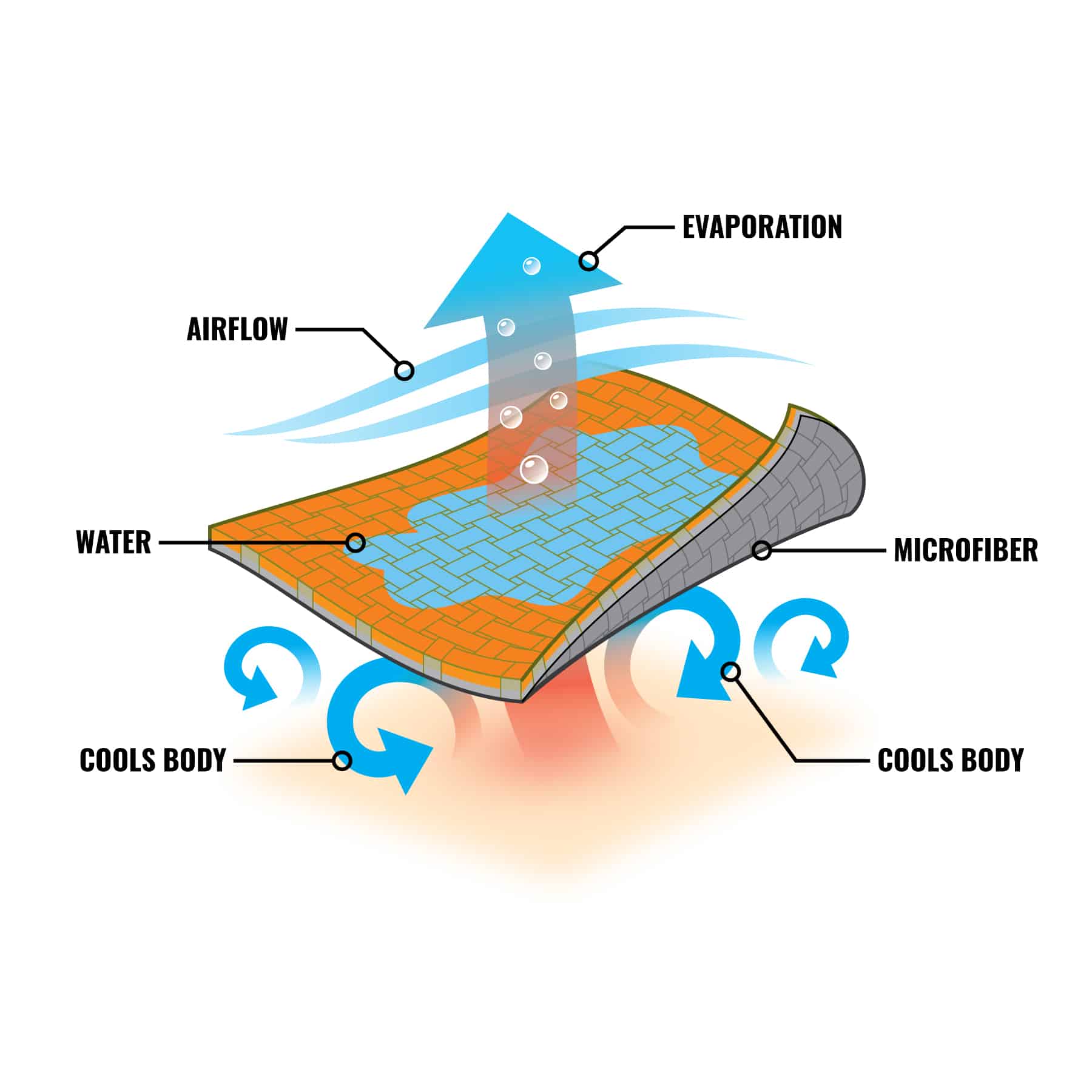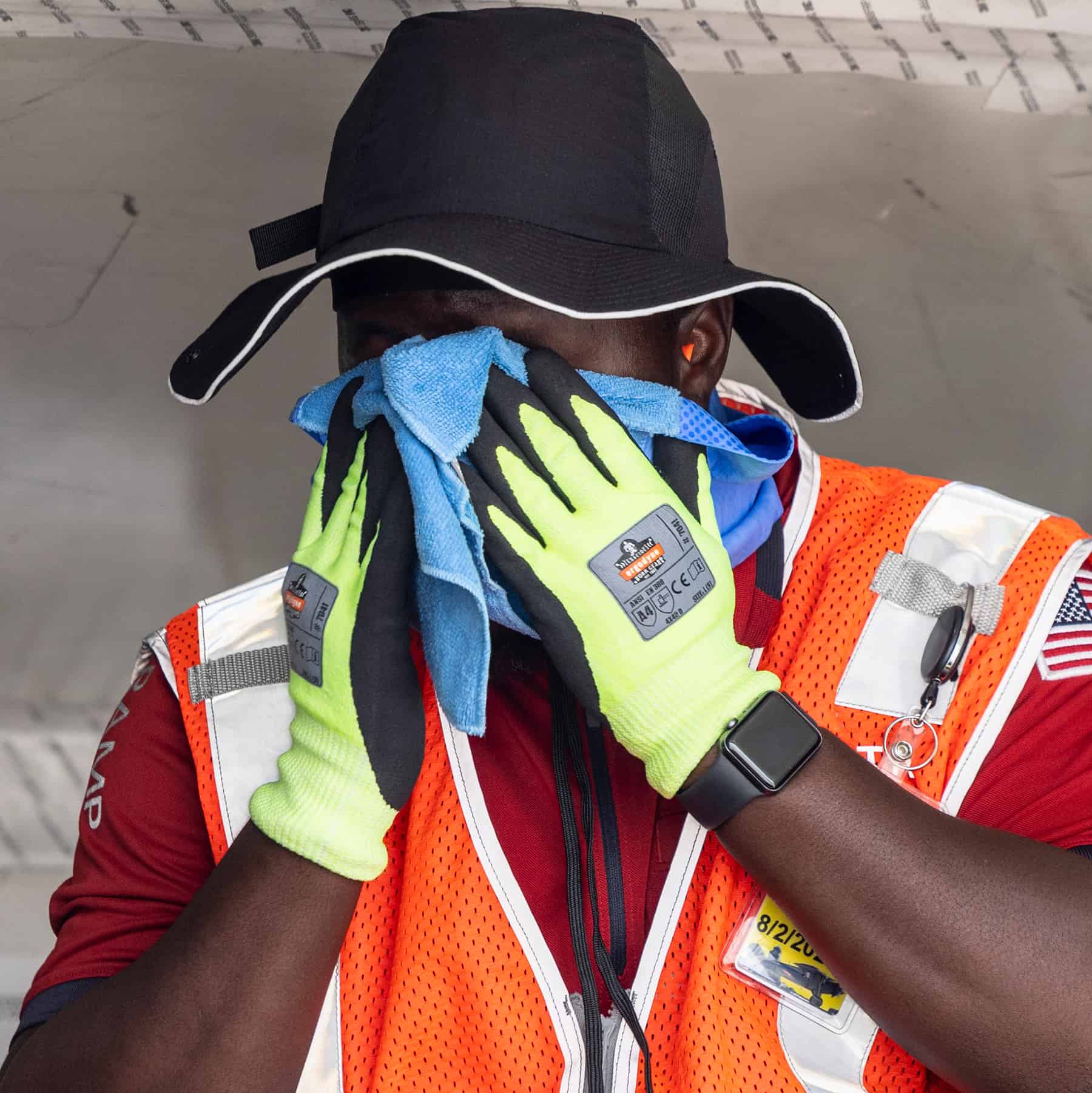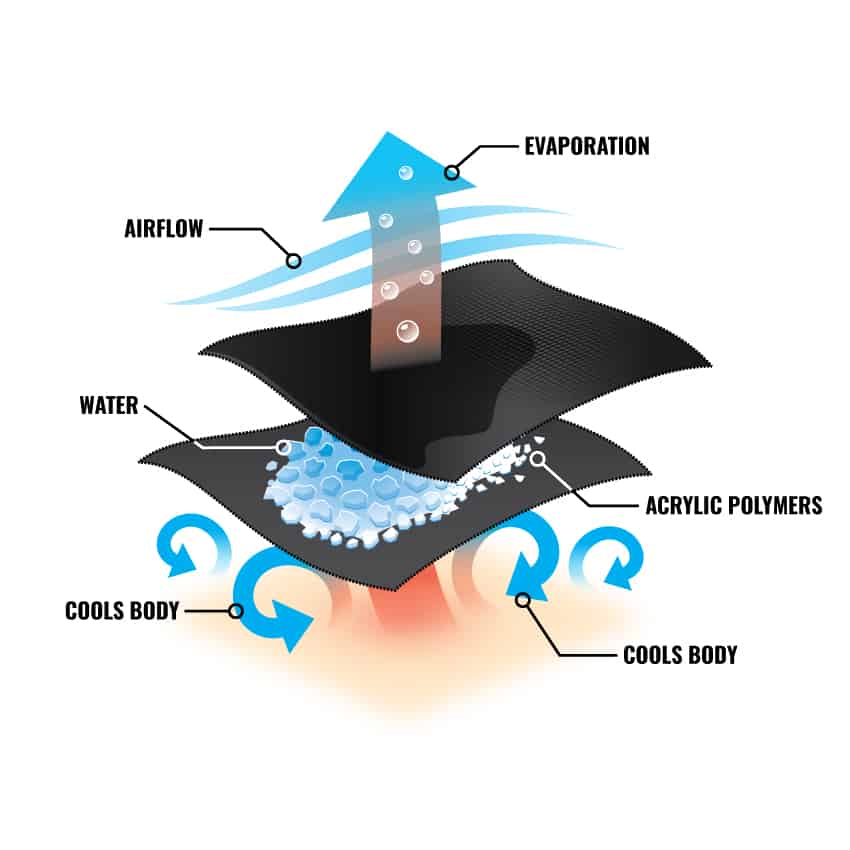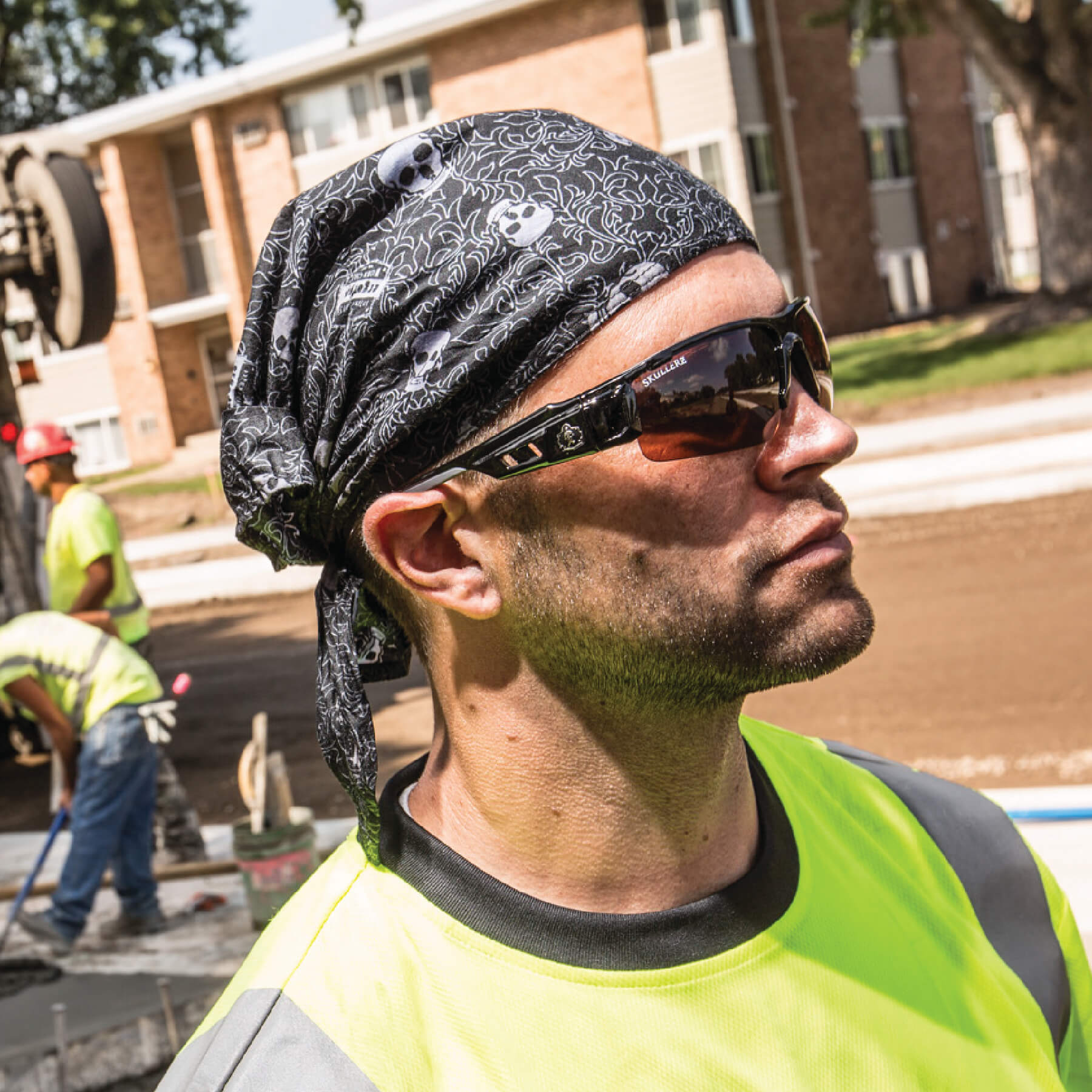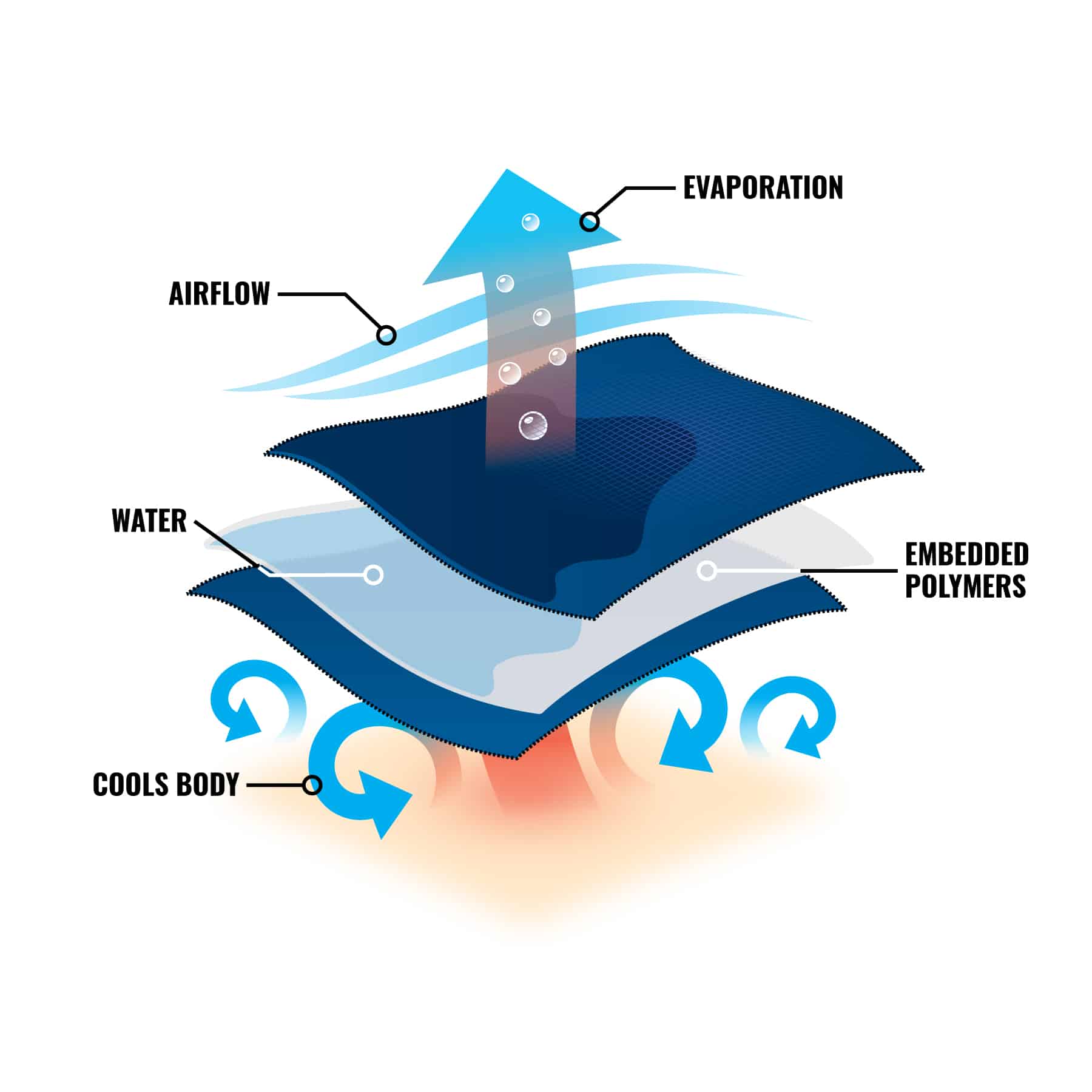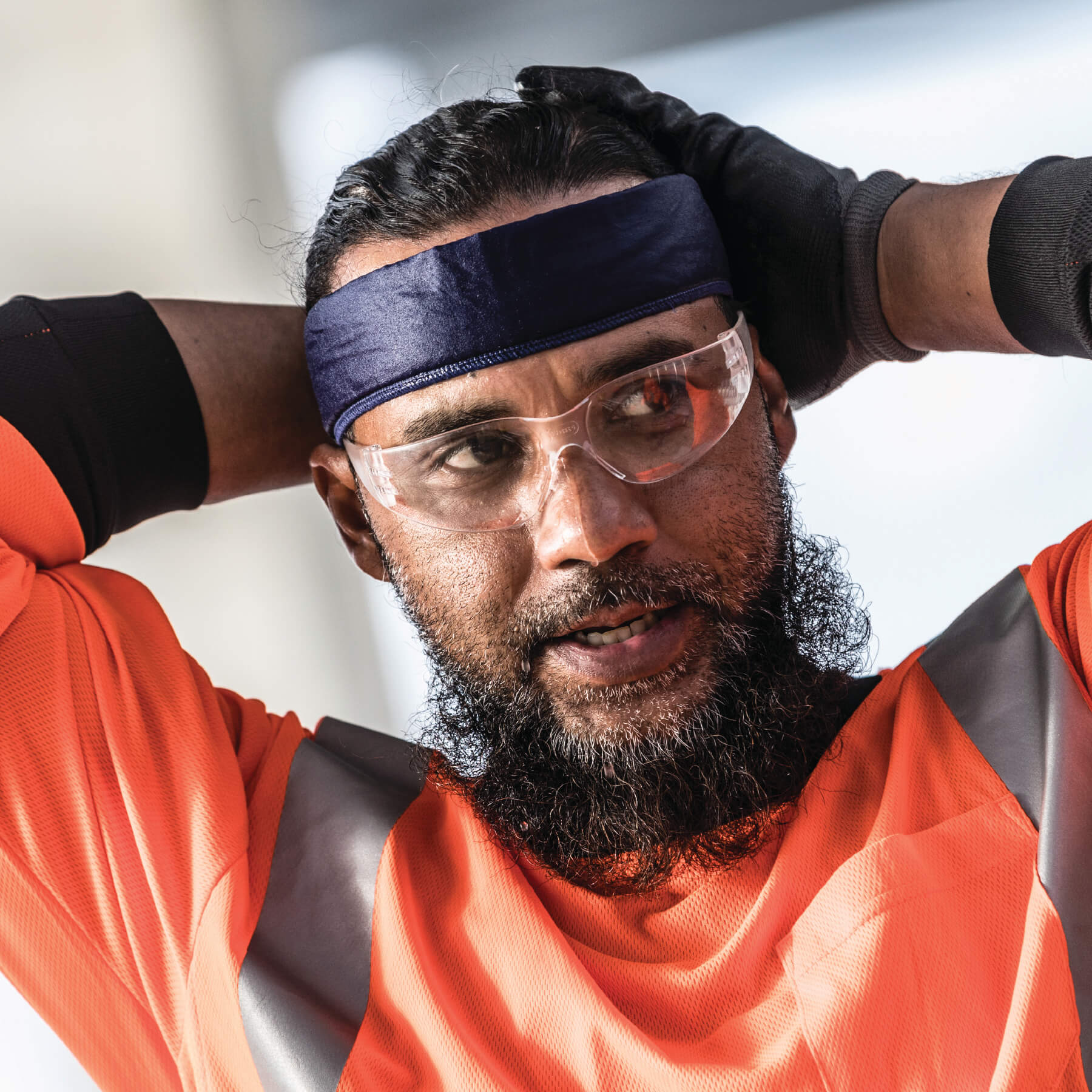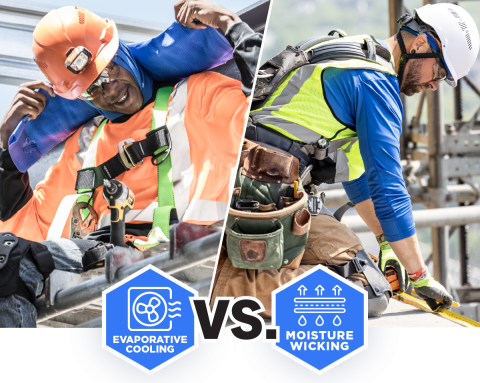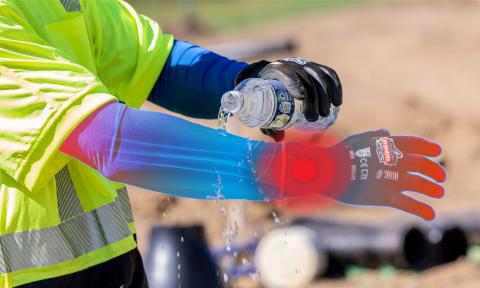COOLING TECHNOLOGY, GEAR AND SOLUTIONS
 Cooling
Cooling
KEEP YOUR COOL—
INSIDE & OUT
Once internal body temps reach 104°F, it only takes 30 minutes to cause brain damage… or worse. Chill-Its cooling technologies are engineered to make sure workers have a stay-cool solution in any indoor or outdoor inferno.
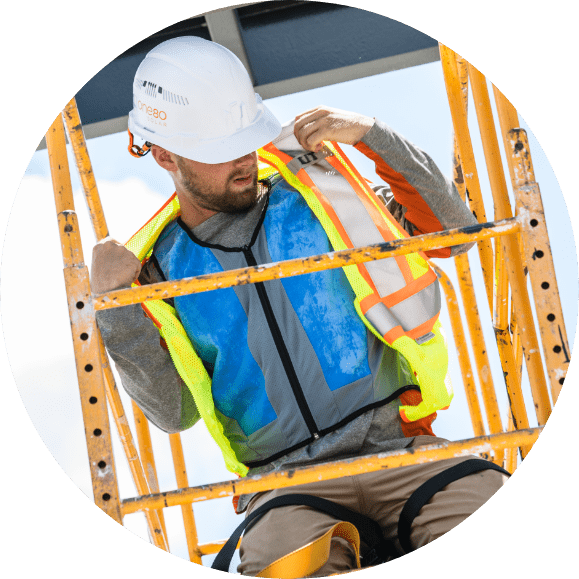
YOU NEED COOLIN’: GO BEYOND WATER, REST & SHADE
Along with the biggies of water, rest and shade, experts recommend cooling PPE as a simple way to maintain safe body and skin temps throughout the shift. And with advanced technologies putting the chill on full blast, keeping cool has never been… well, cooler.
CHILL-ITS COOLING TECHNOLOGIES: THE [RE]BIRTH OF COOL
Cutting-edge tech transports sweet relief light years beyond frozen washcloths and clunky ice packs.
Wet Evaporative Cooling
Like sweat [on steroids]
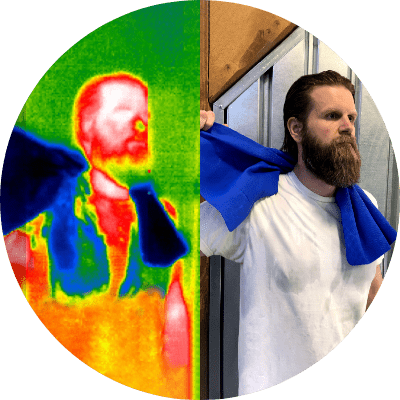
How it Works
Similar to sweat, advanced tech such as PVA, microfiber and polymers draw heat away from the body to keep you cooler longer
Best for
Hot and dry outdoor environments with low/moderate humidity and sufficient airflow
Cooling Time
Up to four hours
How to activate
Run or soak in water for between 1-5 minutes (depending on technology)
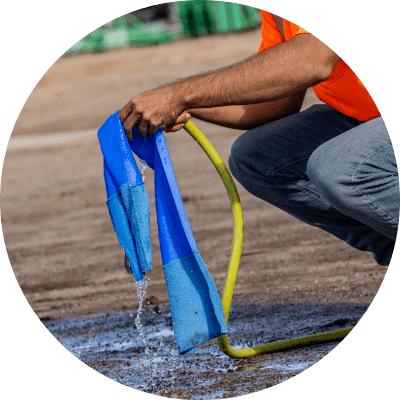
PVA Cooling Solutions
Microfiber Cooling Solutions
Acrylic Polymer Cooling Solutions
Embedded Polymer Cooling Solutions
Dry Evaporative Cooling
Drip-free cooling for days on end
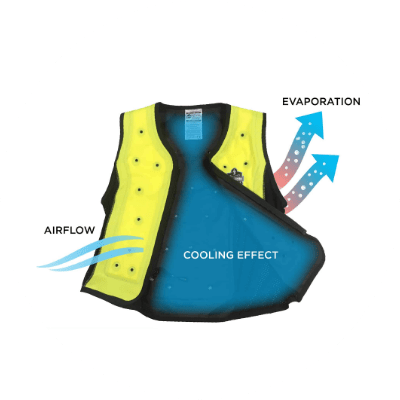
How it Works
Gradually releases water via evaporation from the inside out to keep you comfortably cool and dry
Best for
Hot and dry outdoor environments with low humidity and sufficient airflow
Cooling Time
Up to 3 days
How to activate
Fill with 16-20oz water
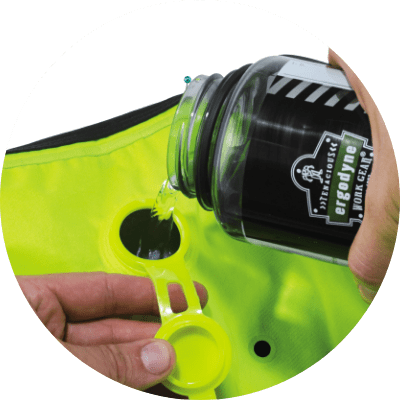
Dry Evaporative Cooling Gear
Phase Change Cooling
Where we’re going, we don’t need air[flow]
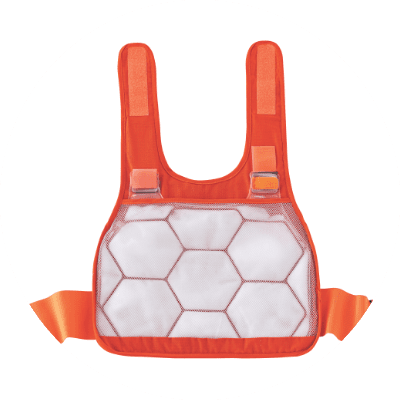
How it Works
Low-bulk charge packs maintain constant 64°F (18°C)
Best for
Hot indoor environments (no airflow required)
Cooling Time
2-4 hours
How to activate
Place in cooler of ice water, freezer, refrigerator or near air conditioner for between 5-60 minutes (depending on method)
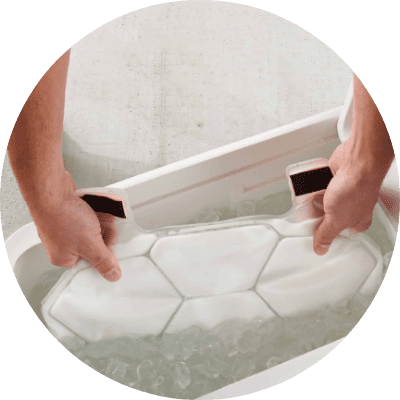
Phase Change Cooling Gear
Recommended Videos
Recommended Blog Articles
Pulse Points: Your Hot Spots For Cooling Relief
Covering Up + Staying Cool In the Heat
Guides & Documents

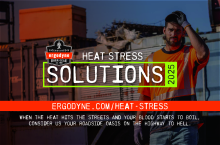
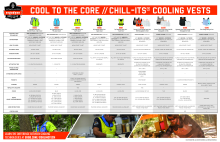
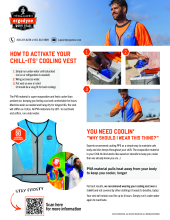
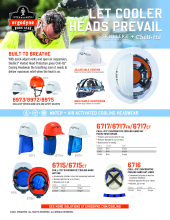
FAQ
Evaporative cooling is a simple, effective and relatively inexpensive approach that can be used in outdoor and indoor environments, but works best in drier, low-to-moderately humid conditions with sufficient airflow. Similar to sweat, evaporative solutions draw heat from your body using an external source of water to create an enhanced cooling effect. More advanced and comfortable than a damp towel, controlled evaporative gear keeps you cool for up to four hours once activated.
Both evaporative cooling technologies that activate with water, PVA and microfiber have slightly differing feels and uses. Hyper-absorbent Poly Vinyl Alcohol (PVA) holds more water than microfiber to provide a more enhanced cooling effect but, like a sponge, it dries stiff—making it only effective when wet.
Conversely, microfiber provides a benefit when wet or dry. When dry, it remains comfortably soft while absorbing and wicking away sweat. When wet, it provides hours of cooling relief
If a fabric is moisture-wicking, it means it will 1) transport sweat away from your skin into the top layer 2) dry out quickly to prevent sweat from soaking the fabric. Moisture-wicking performance is predicted by the capillary action—the movement of liquid through spaces in the fabric. The most effective moisture-wicking fabrics are synthetic fabrics such as polyester, nylon or microfiber (often a polyester-nylon blend). These fabrics are “hydrophobic”, meaning they resist water penetration.
While all fabric provides a degree of protection from the sun, certain cooling products have an additional UV treatment applied for enhanced protection from the sun’s harmful UVA and UVB rays. A fabric’s Ultraviolet Protection Factor (UPF) indicates how much radiation it will allow to reach your skin. A UPF rating of 30-49 indicates very good protection, with a UPF 50+ rating providing excellent protection (blocking 98% of the sun’s rays).
Cooling products can be activated in a variety of ways depending on their technology. Evaporative cooling products require water. Wet evaporative cooling products are activated by running or soaking in water, while dry evaporative products are filled (similar to a water bottle) so that the exterior remains dry. Evaporative cooling products do not require the use of a refrigerator or freezer. Phase change cooling does not require moisture, and packs can be activated by placing them in a cooler of ice water, freezer, refrigerator or near an air conditioner.
If cooling products made with acrylic polymers are placed in/run under water for more than the recommended 5 minutes, they can overly “plump up” and become uncomfortable to wear. For other cooling technologies (PVA, microfiber, phase change, embedded polymers), there is no risk of over-activation.
Yes. To reactivate, simply rewet (wet evaporative), refill (dry evaporative) or rechill (phase change).
Cooling products can be machine or hand washed depending on product wash instructions. It is recommended that all products be hang/air dried regardless of wash method (note: products containing PVA will dry stiff).
PVA is hyper-evaporative, which means that by definition it is designed to push all moisture out. Like a sponge, it will get hard when dry. Simply rewet to activate and soften.
To store cooling towels, wring out excess water, fold up and place in the package tube or a plastic zippered bag for safe keeping. Towels made with PVA will dry stiff. When removing, make sure to re-wet the towel before unfolding to avoid tearing of the PVA material. Both PVA and evaporative cooling towels can also be stored by hanging to dry. Before storing, check the towel for dirt and debris. If dirty, machine wash and hang to dry.
While it is possible for evaporative cooling products to be used in indoor environments with low humidity and sufficient airflow, they are not nearly as effective as phase change cooling products. Because phase change charge packs do not require airflow, they can be used in any environment.
Phase change cooling technology pulls heat from the body via rechargeable cooling packs filled with non-toxic phase change liquids that, when activated/solidified, will maintain a temperature between 55° F (13° C) and 64° F (18° C). Depending on what you have available (cooler, fridge or freezer), activation takes between 5-60 minutes and lasts up to four hours. Because the charge packs do not require airflow to work, they’re an ideal choice for high-heat indoor settings like foundries, glass manufacturing and paper & pulp.
Phase change packs contain non-toxic liquids that can be quickly activated to deliver a cooling effect that lasts hours longer than standard ice or gel packs. Unlike these alternatives, phase change packs are also not stiff or frosty—making them a more comfortable solution for long term wear, especially underneath bulky PPE.


